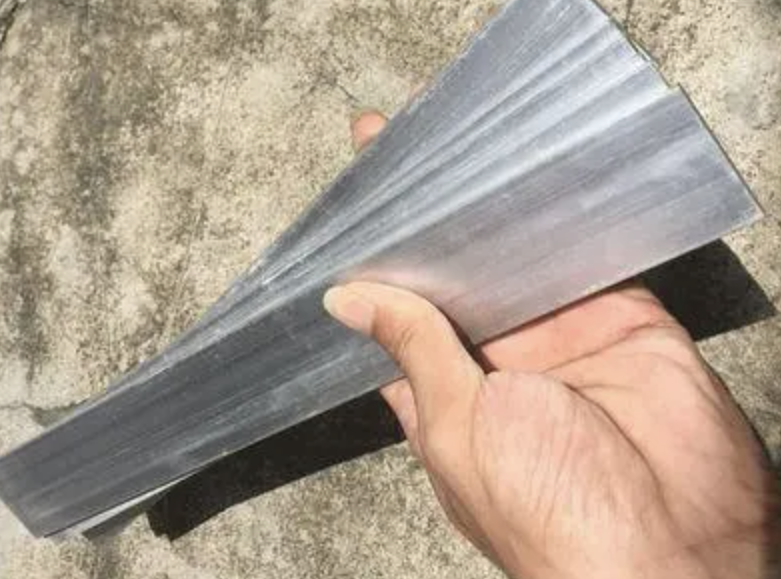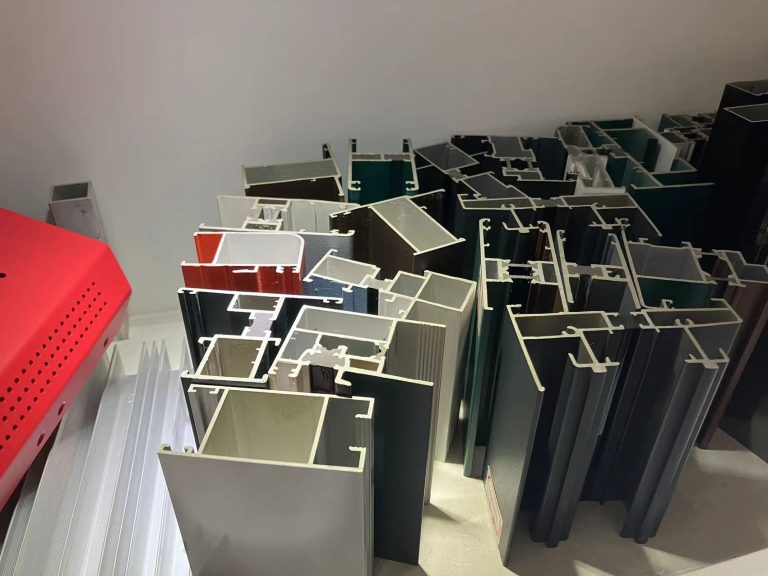What is 6463 Aluminum Alloy? Composition, Properties, and Uses

6463 aluminum alloy is a durable and lightweight material widely used in manufacturing and construction. It falls under the category of deformed aluminum alloys, specifically designed for shaping and forming processes while maintaining strength. This alloy features a smooth surface finish and excels in resisting corrosion, making it perfect for both decorative and functional applications.
Chemical Composition of 6463 Aluminum Alloy
Engineers carefully design the composition of 6463 aluminum alloy to achieve specific performance characteristics. Below is a breakdown of its key ingredients:
Aluminum (Al)
Aluminum serves as the primary element, making up over 98% of the alloy. This high concentration provides the alloy with its lightweight structure, excellent corrosion resistance, and adaptability for various applications.
Silicon (Si)
Silicon is added to enhance the alloy’s strength and wear resistance. It also contributes to its ability to achieve a smooth, polished finish, making it ideal for decorative purposes.
Magnesium (Mg)
Magnesium improves hardness and durability, ensuring the alloy can withstand mechanical stress. Its presence also boosts the overall structural integrity of the material.
Copper (Cu)
Copper, though present in smaller quantities, plays a critical role in improving machinability. It allows for precise shaping and processing without compromising the alloy’s stability.
Other Elements
Trace amounts of additional elements may be included to fine-tune specific properties, such as thermal conductivity or surface finish. These minor additions ensure the alloy performs optimally in specialized applications.
Key Takeaways
- Aluminum forms the backbone of the alloy, ensuring lightness and corrosion resistance.
- Silicon, magnesium, and copper work together to enhance strength, durability, and machinability.
- The precise balance of these ingredients makes 6463 aluminum suitable for industries like automotive design and architecture.
This composition acts like a well-balanced recipe where each ingredient has a distinct purpose, resulting in an alloy that meets diverse functional and aesthetic requirements.
6463 Aluminum Alloy Properties
6463 aluminum alloy is valued for its strong mechanical performance, practical physical characteristics, and excellent corrosion resistance. Below is a concise breakdown of its key properties:
Mechanical Properties
6463 aluminum alloy delivers reliable strength and flexibility:
- Yield Strength: Over 200 MPa, allowing the material to resist deformation under stress.
- Tensile Strength: Above 260 MPa, providing durability and resistance to breaking under tension.
- Elongation: Greater than 15%, ensuring good plasticity for shaping and forming.
These attributes make the alloy suitable for applications requiring both strength and adaptability, such as automotive components and structural profiles.
Physical Properties
The alloy’s physical traits contribute to its versatility:
- Density: 2.72 g/cm³, making it lightweight and ideal for reducing material weight in designs.
- Melting Point: Approximately 600℃, ensuring stability in high-temperature environments.
- Thermal Conductivity: 201 W/(m·K), enabling effective heat dissipation for cooling systems and electronics.
Its lightweight nature and thermal efficiency make it a practical choice for industries requiring heat management or lightweight construction.
Corrosion Resistance
6463 aluminum alloy naturally resists corrosion:
- A protective oxide film forms on its surface, shielding it from oxidation and environmental damage.
- This layer enhances durability and reduces maintenance needs, even in harsh conditions.
The alloy is well-suited for outdoor applications or environments exposed to moisture and pollutants.
Summary of Key Features
- High yield and tensile strength ensure durability under stress.
- Lightweight density and efficient heat conductivity support practical use in various industries.
- Natural corrosion resistance extends the material’s lifespan, reducing upkeep costs.
6463 alloy’s combination of strength, flexibility, and durability makes it a preferred choice across automotive, architectural, and industrial sectors.
Applications of 6463 Aluminum Alloy
6463 aluminum alloy is widely used across multiple industries due to its strength, corrosion resistance, thermal conductivity, and ease of manufacturing. Below is a concise overview of its primary applications:
Construction Industry
6463 aluminum is a preferred material for architectural components because of its durability and versatility:
- Door and Window Frames: Its high strength and corrosion resistance make it ideal for long-lasting aluminum door and window frames.
- Curtain Walls: Builders use this alloy in curtain wall frames to ensure wind pressure resistance, simplify assembly, and achieve a polished decorative finish.
Its combination of functionality and aesthetics makes it essential for modern construction projects.
Transportation Sector
The alloy’s lightweight structure and durability offer significant advantages in transportation:
- Body Components: Manufacturers rely on it for automobiles, subway vehicles, railroad coaches, and high-speed buses to reduce weight while preserving structural strength.
- Engine Parts: Doors, shelves, and engine components benefit from the alloy’s machinability and reliability.
These applications help improve fuel efficiency and vehicle performance.
Electrical and Electronics Industry
6463 aluminum alloy’s excellent thermal conductivity makes it indispensable for electronic devices:
- Heat Sinks: The alloy efficiently dissipates heat, making it ideal for heat sinks in electronic systems.
- Casings: It is used to produce lightweight yet durable casings for laptops, power supplies, and other electronic products.
These properties ensure the efficient operation and longevity of electronic devices.
Aerospace Industry
The aerospace sector uses 6463 alloy for its strength-to-weight ratio and corrosion resistance:
- Aircraft Components: Manufacturers use this alloy to produce aircraft skins, fuselage frames, and other structural parts that require durability without adding unnecessary weight.
This makes the alloy a reliable choice for aerospace engineering.
Packaging Industry
The alloy’s flexibility and corrosion resistance make it suitable for packaging applications:
- Cans and Foil Packaging: Industries rely on this alloy to create lightweight aluminum cans, sheets, and foils for food and beverage storage.
This ensures safe packaging while maintaining sustainability.
Processing Benefits
6463 aluminum alloy offers excellent processing capabilities that enhance its usability:
- It can be easily shaped through extrusion, welding, and cutting processes.
- Its moderate hardness allows precise machining into complex shapes.
These features make it a practical material for manufacturers across various industries.
Key Highlights
- Durable yet lightweight material suitable for construction, transportation, aerospace, electronics, and packaging.
- High corrosion resistance ensures longevity in harsh environments.
- Easy processing allows customization for specific applications.
6463 aluminum alloy combines strength, versatility, and ease of use, making it an essential material across diverse industries.
Related products: Extruded aluminum profiles
How 6463 Aluminum Alloy Promotes Sustainability Through Recycling and Safe Usage?
6463 aluminum alloy is an environmentally conscious material that promotes sustainability through its recyclability, safety, and low ecological footprint. Below is a detailed breakdown of its eco-friendly attributes:
Recyclability
6463 aluminum alloy is highly recyclable, making it a sustainable choice for manufacturers.
- Infinite Reuse: Products made from this alloy can be melted down and repurposed repeatedly while maintaining their structural integrity and performance.
- Resource Conservation: Recycling aluminum reduces the need for raw material extraction, conserves energy, and minimizes waste. For example, manufacturers efficiently transform discarded aluminum components from vehicles or buildings into new products, reducing landfill impact.
Non-Toxic Properties
This alloy is safe for both humans and the environment during use.
- Non-Toxic Material: Unlike some materials that release harmful chemicals, 6463 aluminum alloy does not leach toxins or degrade into hazardous substances.
- Applications: Industries widely use this alloy in packaging, electronics, and construction without compromising health or ecosystems.
Its non-toxic nature ensures safe handling and usage across industries.
Reduced Environmental Impact
The production and application of 6463 aluminum alloy contribute to lower environmental harm.
- Energy Efficiency: Its lightweight design reduces fuel consumption in transportation applications, lowering greenhouse gas emissions.
- Cleaner Manufacturing: Aluminum processing generates fewer emissions compared to many other materials, making it a cleaner option for industrial use.
These factors make it a practical choice for businesses aiming to reduce their carbon footprint.
Key Environmental Benefits
- Recyclable: Can be reused indefinitely, reducing waste and conserving natural resources.
- Safe to Use: Non-toxic properties make it harmless for humans and the environment.
- Energy-Saving: Lightweight design leads to improved energy efficiency in transportation and other applications.
6463 aluminum alloy supports sustainability goals without compromising performance, making it an ideal material for industries focused on eco-friendly practices.
Final Thoughts
In markets like the United States, 6463 aluminum alloy has gained popularity due to its reliability and adaptability. It is widely used by manufacturers seeking efficient materials that balance performance with sustainability.
This alloy is an excellent choice for industries aiming to innovate while meeting practical and environmental requirements. With its combination of durability, flexibility, and eco-friendliness, 6463 aluminum alloy remains a valuable resource in modern engineering and design.





